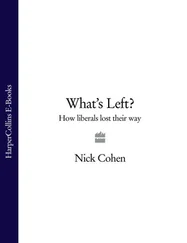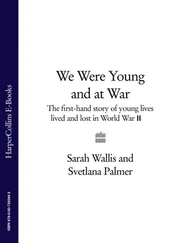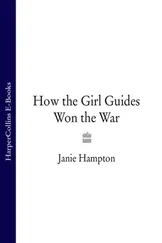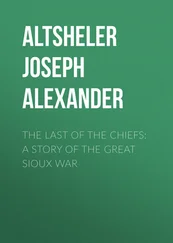To disentangle the interwoven strands of the political drama that was played out subsequently on the European stage – it is hard to make any sense of Operation Barbarossa otherwise – is to lay bare the arrogance and fear that led the disunited democracies of western Europe to regard the Soviet Union with an aversion that not only precluded a meaningful dialogue with the Kremlin but also led most of them to regard Germany’s unhinged Führer as the lesser of two evils. From the ruins of Versailles to the rise of Hitler in Germany and Stalin’s murderous consolidation of power in the Soviet Union, all the way to the shock of the Molotov–Ribbentrop Pact in August 1939, the official papers, letters, diaries and memoirs of the chief protagonists illuminate only too starkly the irreconcilable or unobtainable objectives that left Europe’s leaders at a loss while the continent drifted ineluctably towards a second conflagration that no one wanted – except Hitler and possibly Stalin (whose main objective was to avoid direct involvement) – but which none of them could stop.
Within a year of starting the Second World War, not only had the German panzers subjugated most of western Europe but Hitler had also decided to postpone the invasion of Britain in favour of destroying the Soviet Union first. There were multiple reasons for this fateful decision, but the trigger for launching Operation Barbarossa lay in the Balkans. This book therefore highlights the bitter contest between Moscow and Berlin to control that combustible and strategically vital region of Europe. When the direct negotiations between the Soviet foreign minister, Vyacheslav Molotov, and Hitler reached a testy impasse at the end of November 1940, the Führer ordered his generals to make detailed plans for the invasion of the Soviet Union for the following spring. In June 1941, by which time he had occupied Yugoslavia and driven the British out of Greece, he found himself at war on two fronts at once.
Operation Barbarossa was thus not quarantined from what was rapidly becoming a global conflict, which is the crucial context within which I have framed the invasion. Within hours of the news that the Wehrmacht was on the warpath within the Soviet Union, Churchill, followed in less grandiloquent terms by Roosevelt a few days later, declared his unequivocal support for the Soviet cause. Before long, both Washington and London found themselves in an unlikely alliance with the world’s only communist state, the three leaders soon becoming known as the ‘Big Three’. This was a seismic rapprochement that not only had a direct impact on the war on the Eastern Front but on the post-war history of Europe. For that reason, my account of Operation Barbarossa also focuses on the intense human and political drama of this turbulent, often acrimonious but critically important three-way partnership as diplomatic emissaries from Washington and London traipsed into the Kremlin to parley with the mercurial Soviet dictator.
Hitler’s invasion of the Soviet Union changed the course of history. As its subtitle suggests, this book was conceived in the belief that the last six months of 1941 were of greater moment than any other period in the twentieth century. Operation Barbarossa was not only a fatal gamble but it was also how Hitler lost the war.
Part One
THE SLIDE TO WAR
1. Paving the Way
Over the Easter weekend of 1922, the elegant resort of Rapallo, on the Italian Riviera, was thronged with affluent Italians who favoured the balmy climate along this part of the Mediterranean coast. The town’s quietude and lack of vulgarity had long appealed to foreigners as well, and especially to those with cultural sensibilities. It was in the lanes around Rapallo that the philosopher Friedrich Nietzsche first incubated the ideas that were later to form the basis for his magnum opus, the novel Thus Spoke Zarathustra , which was widely regarded as impenetrable. Among others to have enjoyed the town’s reticent streets and discreet cafes were Guy de Maupassant and Lord Byron. Its contemporary habitués included Ezra Pound and the English essayist Max Beerbohm, who was renowned for his dandified caricatures of the English upper classes.
Rapallo was graced by a ruined monastery, an ancient basilica with a leaning bell tower, numerous medieval churches and the remains of two castles, one of which was on a rocky promontory at the edge of the harbour, where it had once stood sentinel against marauding pirates. For the louche, there was also a sprinkling of discreet casinos and an occasional night club. The most imposing building of all was the neo-Palladian Excelsior Palace hotel, which boasted more than 140 rooms and a ‘bathing establishment’ overlooking the sea. The hotel was greatly preferred by the reticent rich and international diplomats in search of privacy and discretion.
It was here on that Easter weekend that the German foreign minister, Walther Rathenau, and the Soviet Union’s Commissar for Foreign Affairs, Georgy Chicherin, sat down together with their delegations to put the final touches to an agreement between their two governments that had been in secret negotiation for several weeks. As they would certainly have been aware, the Rapallo treaty, as it was called, was a diplomatic time bomb which was primed to detonate on Easter Monday just under forty kilometres along the coast in the city of Genoa. Its effect was to be devastating, the collateral damage irreparable.
As he strode through the jostling mass of cameras and newsmen into the great conference chamber in the thirteenth-century Palazzo San Giorgio in Genoa on the afternoon of Monday, 10 April 1922, the British prime minister, Lloyd George, was quite unaware of what was being hatched in Rapallo. He exuded confidence and resolve. After a sustained bout of shuttle diplomacy he had managed to cajole thirty-four fractious European nations into attending a great conference at which he hoped their deep animosities would be reconciled by an international treaty that – under his presiding genius – would finally restore order and prosperity to a fractured continent.
The scale of Lloyd George’s ambition was boundless. In the House of Commons before his departure for Italy he declared that Europe was ‘broken into fragments by the devastating agency of war’, and that his purpose at Genoa was nothing less than the ‘reconstruction’ of the entire continent. 1 In that spirit, he had timed his entrance into the palazzo for maximum impact, confident that the assembled delegates would rise to reward his endeavours with a prolonged ovation – as they did.
The British prime minister was not only a flamboyant politician who shone in the limelight but also a man of genuine strategic vision and imagination. As one of the leaders of the four Allied Powers – Britain, France, Italy and the United States – who had wrangled their way towards the Treaty of Versailles three years earlier, he had been among the first to realize that the Paris Peace Conference had done nothing to heal the gaping wounds of the Great War and very little to prevent them festering with potentially cataclysmic consequences.
At best, the Versailles treaty had wrapped a bandage around a suppurating lesion. It had imprinted new boundaries on the map of Europe, carving out a myriad independent states from diverse regions that, for the last half century or more, had suppressed their internal ethnic and cultural animosity under the tutelage of four competing imperial autocracies. The European ‘balance of power’ – a concept forged by the Austrian chancellor, Prince Klemens von Metternich, and his Holy Alliance in the early nineteenth century and elaborated by the German Empire’s ‘Iron Chancellor’, Otto von Bismarck, with his proclamation of the Second Reich in 1871 – was already crumbling well before 1914. By the end of the Great War it had collapsed entirely.
Читать дальше
![Джонатан Димблби Barbarossa: How Hitler Lost the War [calibre] обложка книги](/books/385421/dzhonatan-dimblbi-barbarossa-how-hitler-lost-the-w-cover.webp)

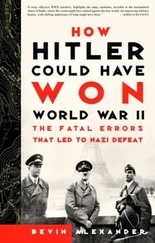

![Traudl Junge - Hitler's Last Secretary - A Firsthand Account of Life with Hitler [aka Until the Final Hour]](/books/416681/traudl-junge-hitler-s-last-secretary-a-firsthand-thumb.webp)



